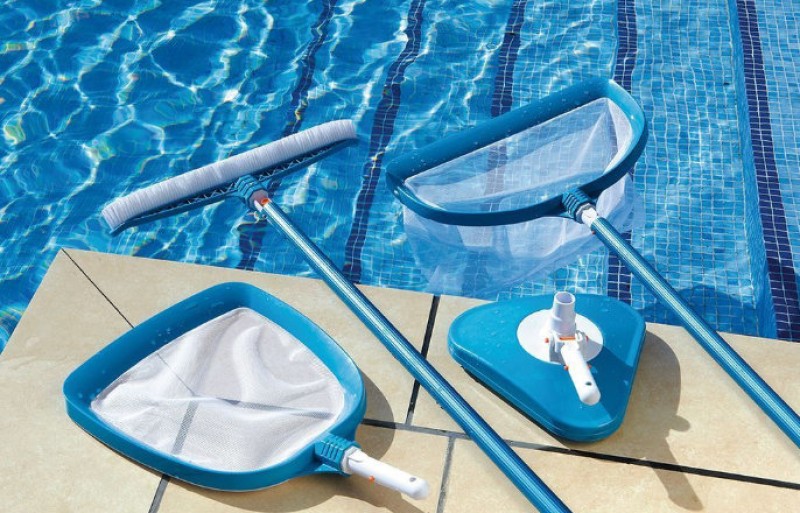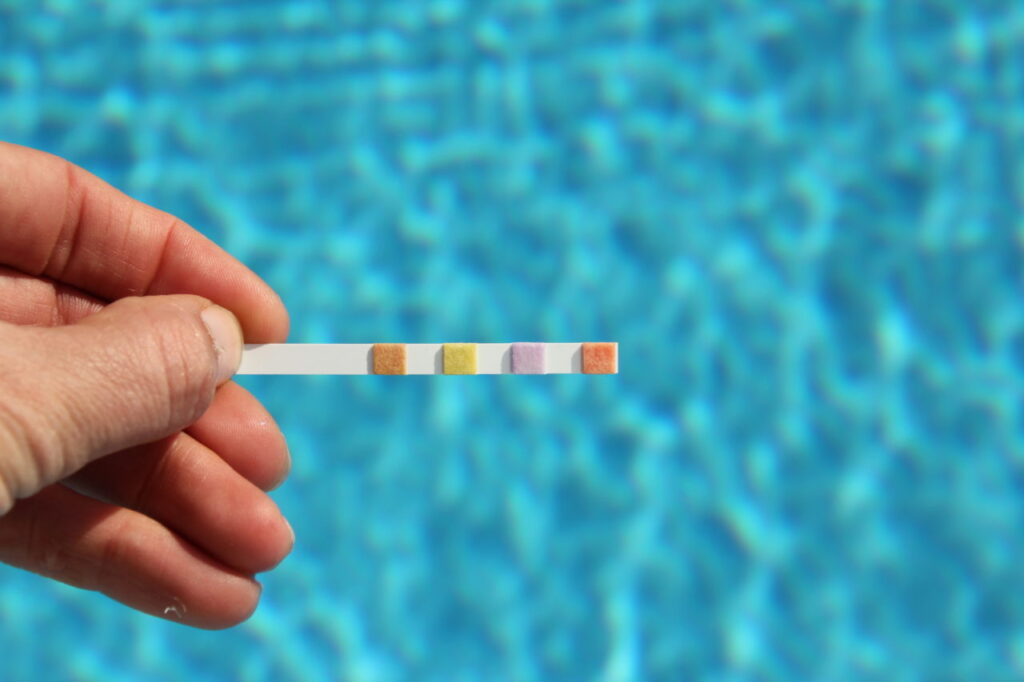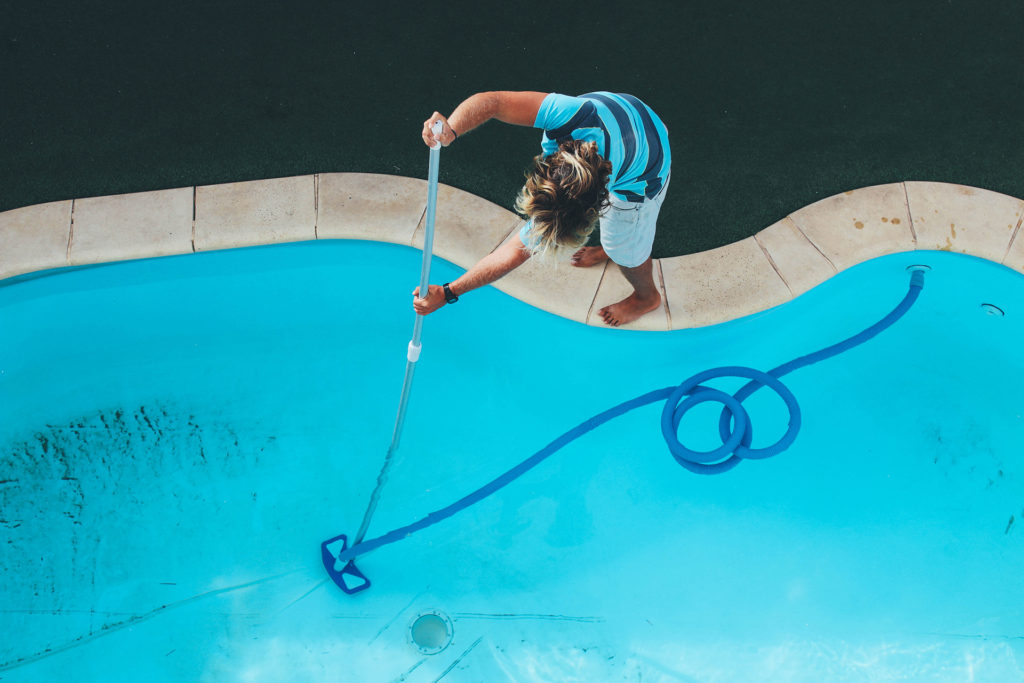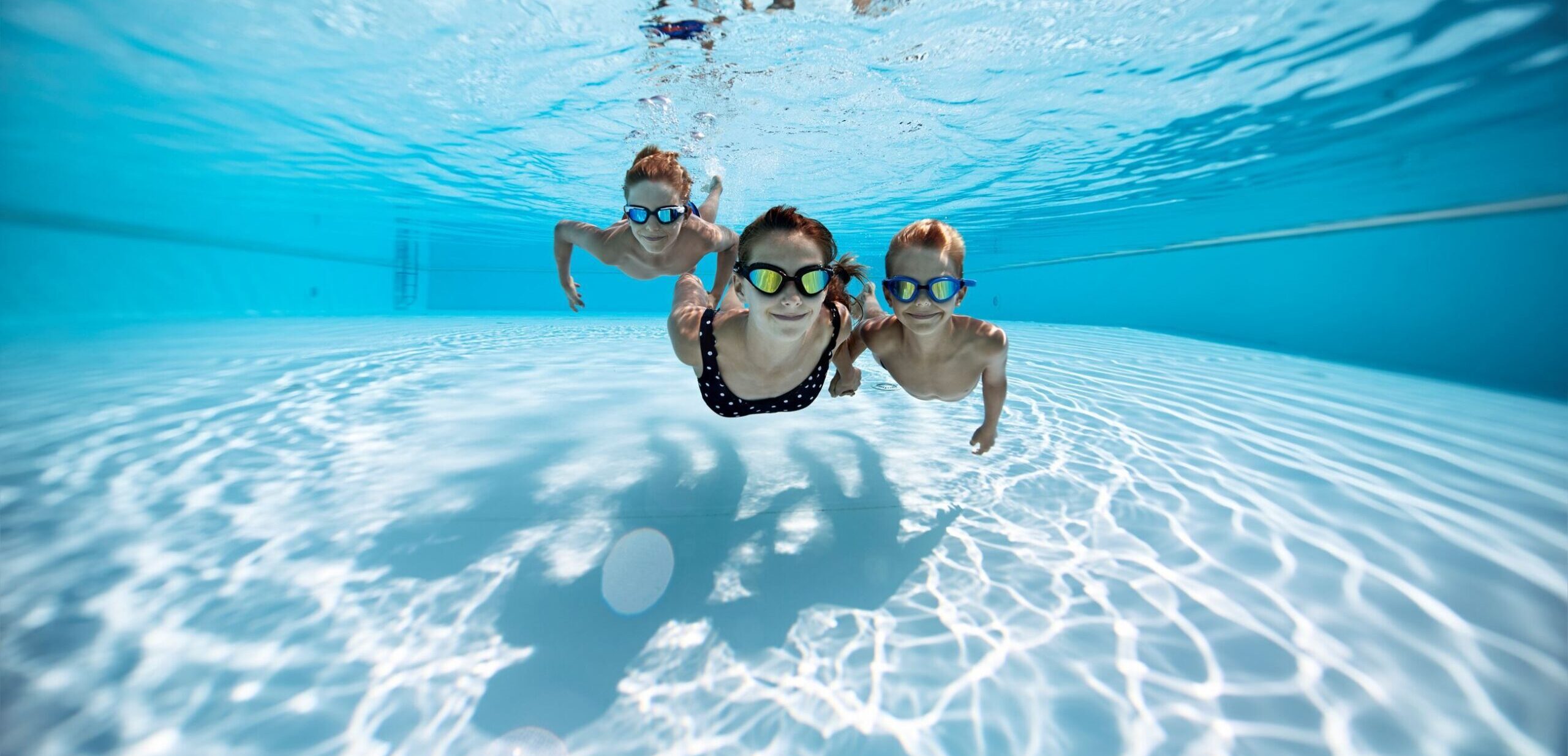Table of Contents
Having a saltwater pool is fun, but only if you’re maintaining it well. Read on to know how you can keep your pool clean so that it looks party-ready all the time.
A swimming pool can make your outdoor living space gorgeous and enhance its overall looks. If you are living in tropical regions, having a pool is a must. The good news is, maintaining a saltwater pool is not as extensive as maintaining traditional chlorine pools.
You have to ensure that your saltwater pool is clean at all times so that you can have a great time. In this article, you can learn about how to upkeep a saltwater pool. Without further delay, let’s see what you can do to keep the saltwater pool clean.
Cleaning Your Pool All Year Round
 If you are thinking that cleaning the pool once a month is enough, then you’re mistaken. Don’t you clean your home every day? The saltwater pool also demands the same attention and care.
If you are thinking that cleaning the pool once a month is enough, then you’re mistaken. Don’t you clean your home every day? The saltwater pool also demands the same attention and care.
Did you mistake the saltwater pool for no maintenance instead of low maintenance? Check out all these tasks that you should perform on your pool regularly.
Daily Tasks
In the daily tasks, you have to start by skimming visible debris like leaves or anything else. Once you have got these things out, you can empty the pump basket. The final task of the day is to clear out the skimmer.
If you keep the pool and all the filters clean all the time, it’s going to save you a lot of bucks in the long run. Following this process will also ensure that your saltwater pool is safe for swimming.
Weekly Tasks
You must maintain a regular schedule for weekly pool cleaning. Meaning, if you do your weekly cleaning on Monday, stick to the same day every week. This way you won’t forget, and it’ll also be easier for you.
You should be testing your pool’s free chlorine and pH levels using a testing kit or strips. Testing the pool’s water will also ensure that the salt cell generator has a perfect adjustment. There are many quality testing kits in the market, and you can buy the one that has good ratings.
The pH level of your saltwater pool should range between 7.2-7.6. As for the free chlorine levels, the ideal range is 1.0 and 3.0 ppm. If the chlorine level is not balanced, then you need to adjust it with a chlorine generator.
On the flip side, if the chlorine levels are beyond the maximum point, you must carry out regular tests. You can reduce the free chlorine concentration by adjusting the output setting on the chlorine generator. Lowering the circulation system running time can also reduce free chlorine.
A super chlorinate ideal for enhancing the free chlorine levels in saltwater pools. If the pH levels are not on point, you can use sodium bicarbonate (baking soda). Many professionals also use muriatic acid and sodium bicarbonate for balancing pH levels.
Monthly Tasks

The monthly tasks are more intricate than the daily and weekly tasks. The monthly schedule includes balancing chemicals and a more intensive cleaning process. We have mentioned all the chemicals that you need to keep track of to maintain your saltwater pool.
Salinity Level
The salinity levels are very crucial for a saltwater pool. The normal salinity range is somewhere between 2700-4500 rpm. However, all salt cell generators differ significantly. The pool owners must thoroughly go through the manufacturer’s instructions to confirm the pool salt levels.
When the salt level is low, all you have to do is add more salt. However, if the salt concentration is high, you have to dilute it with more water. Do not add the salt or dilute the water without knowing the right amount.
Cyanuric Acid
The cyanuric acid or CYA does the stabilizing job for your saltwater pool. A proper CYA level ensures that the UV rays are not hampering the chlorine levels in your pool. A pool without a stabilizer can lose almost all its chlorine on a sunny day.
A saltwater pool requires high levels of CYA for the best results. The CYA must be around 70 and 80 ppm. Lowering the CYA is not as easy as increasing it. You can adjust the low CYA level by adding more products to it.
The only way to bring down the CYA level is by diluting the water. So, you can drain the pool water a bit and add some fresh water. Although, if the concentration is not significantly high, you can wait a couple of days for the pool to correct itself.
Calcium Hardness
A saltwater pool with a high calcium level can lead to corrosion and severe damage. The perfect range of calcium is 200-400 ppm. Lowering calcium levels is challenging, but you can still do it. The best method to control the calcium level is by draining out some pool water and adding fresh water.
However, this is an expensive process. Another way to take care of calcium level is by using flocculant. It’s best if you leave the job of handling calcium hardness to a professional.
Alkalinity
The pool’s alkalinity and pH should be in sync to keep your saltwater pool safe and clean. If your pool water looks cloudy, this means that the alkalinity is high. On the flip side, if the alkalinity is low, it can damage and cause corrosion in your pool.
The perfect alkalinity range for saltwater pools is 80 to 120 ppm. To reduce alkalinity, you can use muriatic acid or sodium bisulfate. For increasing the alkalinity, you can add sodium bicarbonate. You have to be patient to notice changes in the alkalinity levels in your pool.
Quarterly Tasks
 Roughly after every three months, we recommend inspecting the pool’s salt cell. Most units these days have an alert system that will notify you when it requires servicing. If your equipment lacks this feature, then you must put it on the calendar.
Roughly after every three months, we recommend inspecting the pool’s salt cell. Most units these days have an alert system that will notify you when it requires servicing. If your equipment lacks this feature, then you must put it on the calendar.
You must check the unit if it has any buildup or dirt. If you see that everything is perfect, then you can rinse the cell and put it back. In case you notice any buildup, you must clean it properly.
You can use a scrub or brush to clean the same. If this does not work, you can use some hydrochloric acid wash.
The Bottom Line
It is excellent to have saltwater pools as they are more comfortable and cheaper to maintain. If you already own a saltwater pool or planning on building one, you must ensure its cleanliness. You have to keep track of the chemicals and keep the generator clean.
And that’s all you need to do to enjoy a well-maintained and clean saltwater pool!
